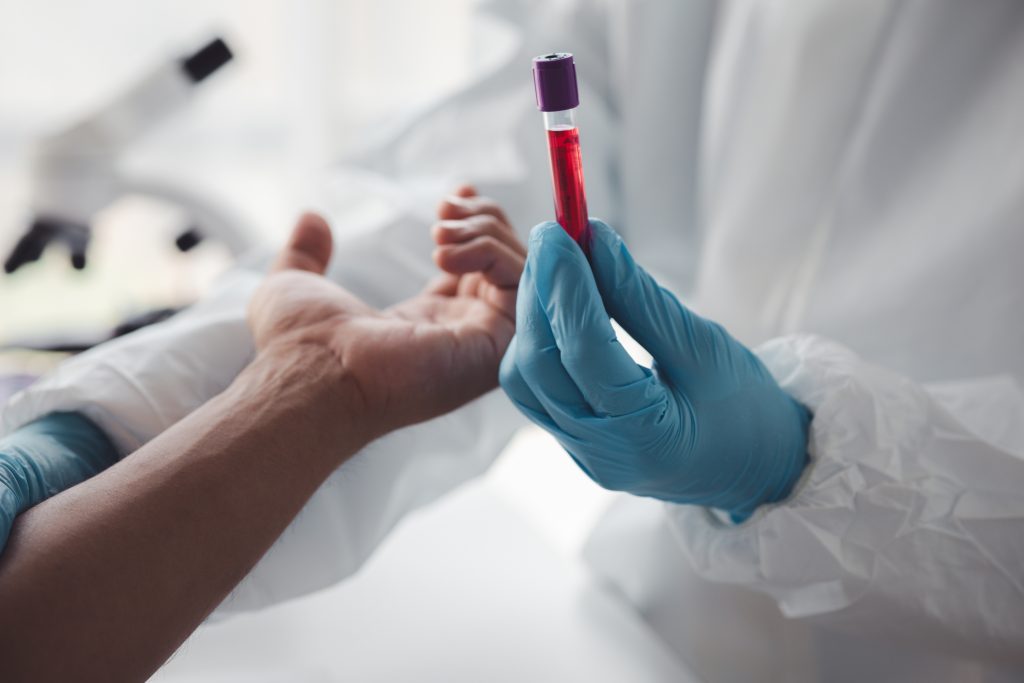
April 17, 2025 – A simple, RNA-based blood test capable of detecting Parkinson’s disease long before symptoms emerge has been developed by researchers at the Hebrew University of Jerusalem.
Currently, neurodegenerative disease diagnosis is similar to the stage that cancer diagnosis was 50 years ago: disease is identified when most of the relevant neurons have already died, and therefore, it is too late to cure. Hebrew University researchers have developed this new Parkinson’s disease (PD) test to pave the way for timely interventions and improved patient outcomes.
The new study, published in Aging Nature, introduces a highly accurate, rapid approach to detecting PD at its earliest stages through the analysis of transfer RNA fragments (tRFs). The test quantifies specific RNA fragments in the blood, focusing on a repetitive RNA sequence that accumulates in PD patients and a parallel decline in mitochondrial RNA, which deteriorates as the disease progresses. By measuring the ratio between these biomarkers, the test offers a non-invasive, rapid, and affordable diagnostic tool, providing hope for early interventions and treatments that could change the course of the disease.
The test employs a dual qPCR assay, measuring the ratio between the repeated short motif and an exemplary mitochondrial sequence, making it cost-effective and accessible for use in a wide range of healthcare settings. In trials involving samples from multiple international cohorts, including the Parkinson’s Progression Markers Initiative, the test achieved a diagnostic accuracy of 0.86, significantly outperforming traditional clinical scoring methods. Moreover, the study found that RGTTCRA-tRF levels decrease following deep brain stimulation, further linking these RNA fragments to both disease mechanisms and treatment responses.
The study was led by Ph.D. student Nimrod Madrer under the supervision of Prof. Hermona Soreq at The Edmond and Lily Safra Center for Brain Sciences (ELSC) and The Alexander Silberman Institute of Life Sciences. They collaborated with Dr. Iddo Paldor from the Shaare Zedek Medical Center, and Dr. Eyal Soreq from the University of Surrey and Imperial College London.
“This discovery represents a major advancement in our understanding of Parkinson’s disease and offers a simple, minimally invasive blood test as a tool for early diagnosis,” said Prof. Soreq. “By focusing on tRFs, we’ve opened a new window into the molecular changes that occur in the earliest stages of the disease.”
The findings have been published under U.S. Provisional Patent Applications, and large-scale diagnostic tests provided broader clinical validation. This research represents a significant milestone in the fight against Parkinson’s disease, offering new hope for millions of people worldwide.
Dopamine Neurons Shape Brain Networks | Credit: Nadav Yayon
The research paper titled “Pre-symptomatic Parkinson’s disease blood test quantifying repetitive sequence motifs in transfer RNA fragments” is now available in Aging Nature and can be accessed here.
Researchers:
Nimrod Madrer1,2, Shani Vaknine-Treidel1,2, Tamara Zorbaz,1,2 Yonat Tzur1,2, Estelle R. Bennett1,2, Paz Drori2, Nitzan Suissa5, David S. Greenberg1,2, Eitan Lerner,2,3, Eyal Soreq4,6, Iddo Paldor2,5, Hermona Soreq1,2
Institutions:
1. The Edmond and Lily Safra Center for Brain Sciences, The Hebrew University of Jerusalem
2. Department of Biological Chemistry, The Alexander Silberman Institute of Life Sciences, Faculty of Mathematics and Science, The Hebrew University of Jerusalem
3. The Center for Nanoscience and Nanotechnology, The Hebrew University of Jerusalem
4. UK Dementia Research Institute Care Research and Technology Centre (UK DRI CR&T) at Imperial College London and the University of Surrey
5. The Neurosurgery department, Shaare Zedek Medical Center, Jerusalem
6. Department of Brain Sciences, Faculty of Medicine, Imperial College London




